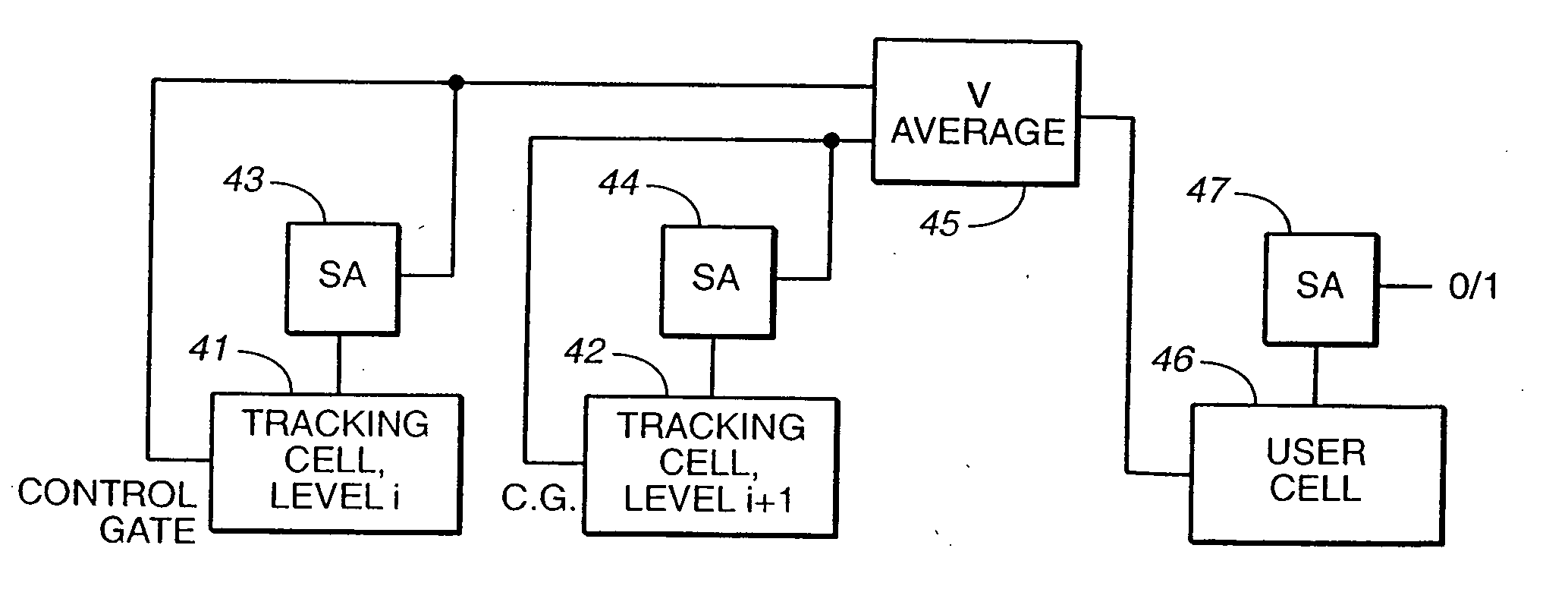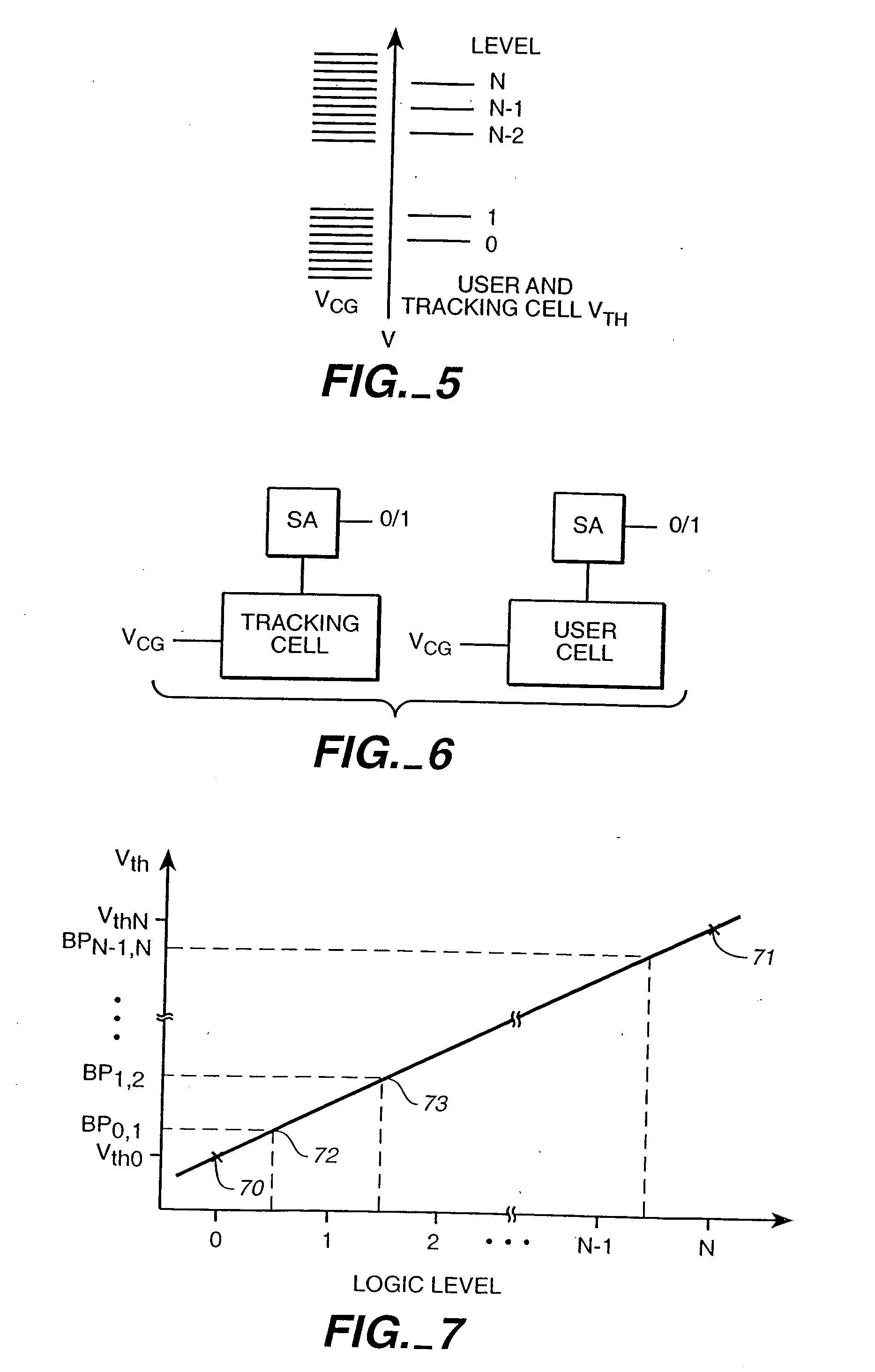Writable tracking cells
a tracking cell and writable technology, applied in the field of nonvolatile semiconductor memory devices, can solve the problems of system write speed most often limited by user cells, and achieve the effect of reducing the uncertainty of the final written threshold of the reference cell and less uncertainty in the final written threshold of the tracking cell
- Summary
- Abstract
- Description
- Claims
- Application Information
AI Technical Summary
Benefits of technology
Problems solved by technology
Method used
Image
Examples
Embodiment Construction
[0028] The storage capacity of non-volatile semiconductor memories has increased both by the reduction in size of the individual components of the circuits and by increasing the amount of data storable in an individual memory cell. For example, devices such as those described in U.S. Pat. Nos. 5,712,189 and 6,103,573 and U.S. patent application Ser. No. 09 / 505,555, filed on Feb. 17, 2000, and one entitled “Non-Volatile Memory Cell Array Having Discontinuous Drain and Source Diffusions Contacted by Continuous Bit Line Conductors and Methods of Forming” by Jack H. Yuan and Jacob Haskell, field on Sep. 22, 2000, which are all assigned to SanDisk Corporation and which are all hereby incorporated herein by this reference, can store upwards of four logical bits per physical floating gate storage transistor. This storage will require each floating gate to be able to have encoded within it one of the sixteen or more possible memory states. Each one of these memory states corresponds to a un...
PUM
 Login to View More
Login to View More Abstract
Description
Claims
Application Information
 Login to View More
Login to View More - R&D
- Intellectual Property
- Life Sciences
- Materials
- Tech Scout
- Unparalleled Data Quality
- Higher Quality Content
- 60% Fewer Hallucinations
Browse by: Latest US Patents, China's latest patents, Technical Efficacy Thesaurus, Application Domain, Technology Topic, Popular Technical Reports.
© 2025 PatSnap. All rights reserved.Legal|Privacy policy|Modern Slavery Act Transparency Statement|Sitemap|About US| Contact US: help@patsnap.com



